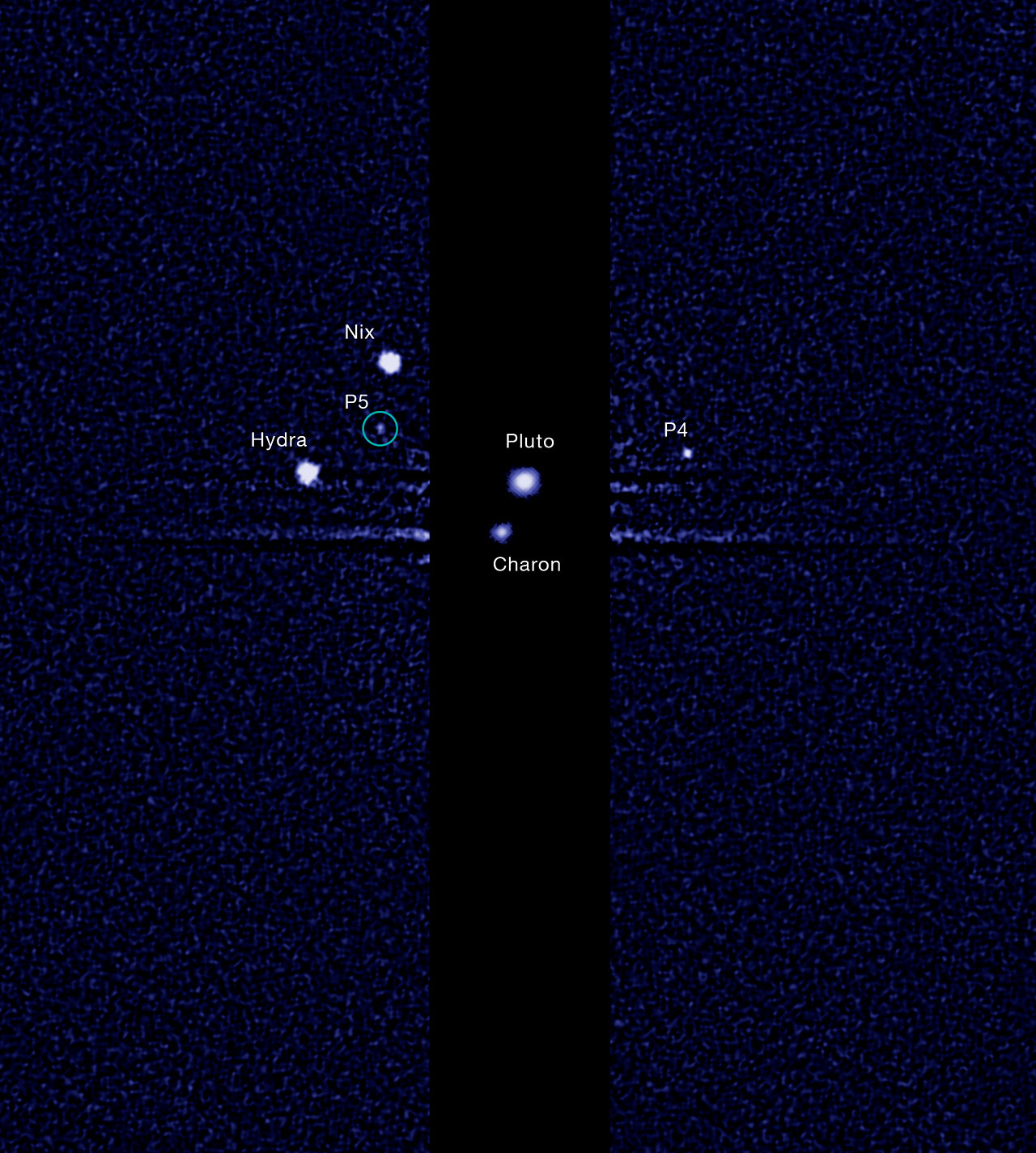Now it has one more, joining Charon, which was discovered in 1978, Nix and Hydra, discovered in 2006, and P4, found in 2011.
Pluto’s new-found moon, provisionally designated S/2012 (134340) 1, or P5, is tiny and only visible as a speck of light in Hubble images, so it is estimated to be irregular in shape and between 10 and 25 kilometers across. It is in a 95,000 kilometer-diameter circular orbit and assumed to lie in the same plane as Pluto’s other known moons.
Really, though, the name P5 is even more boring than P4. Surely there is a Roman or Greek goddess name, or even a Hindu one, that can be more interesting. Given the current naming system, what would you call P5? Anything has to be better. P5 was detected in nine separate sets of images taken by Hubble’s Wide Field Camera 3 on June 26th, 27th and 29th and July 7th and July 9th, 2012.

CLICK TO ENLARGE. The green circle marks the newly discovered moon, designated S/2012 (134340) 1, or P5, as photographed by Hubble’s Wide Field Camera 3 on 7 July 2012. The darker stripe in the center of the image is because the picture is constructed from a long exposure designed to capture the comparatively faint satellites of Nix, Hydra, P4 and S/2012 (134340) 1 and a shorter exposure to capture Pluto and Charon, which are much brighter. Credit: NASA, ESA, and M. Showalter (SETI Institute)
Why does such a small planet can have such a complex collection of satellites? The new discovery adds weight to the favored hypothesis that all the moons are relics of a collision between Pluto and another large Kuiper belt object billions of years ago.
We'll get more answers about Pluto soon. New Horizons, a NASA space probe, is currently en route to Pluto, with a high-speed flyby scheduled for 2015. It will return the first ever detailed images of the Pluto system, which is so small and distant that even Hubble can barely see the largest features on its surface. In the years following the New Horizons Pluto flyby, astronomers plan to use the infrared vision of the will-be-finished-someday James Webb Space Telescope for follow-up observations. The James Webb Space Telescope will be able to study the surface chemistry of Pluto, its moons, and many other bodies that lie in the distant Kuiper Belt along with Pluto.
The Pluto team members are M. Showalter (SETI Institute, Mountain View), H.A. Weaver (Applied Physics Laboratory, Johns Hopkins University, Baltimore), and S.A. Stern, A.J. Steffl, and M.W. Buie (Southwest Research Institute, San Antonio).





Comments